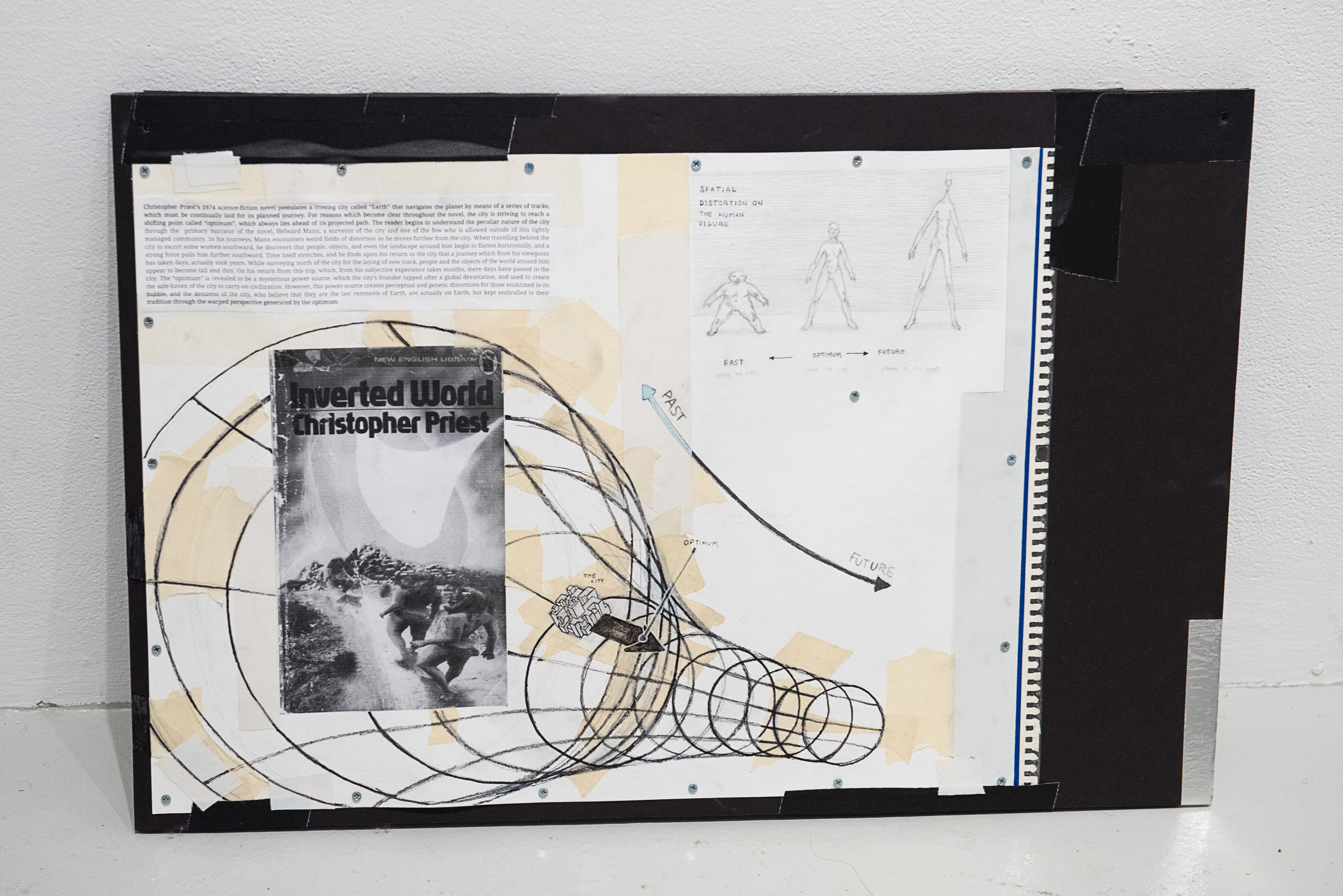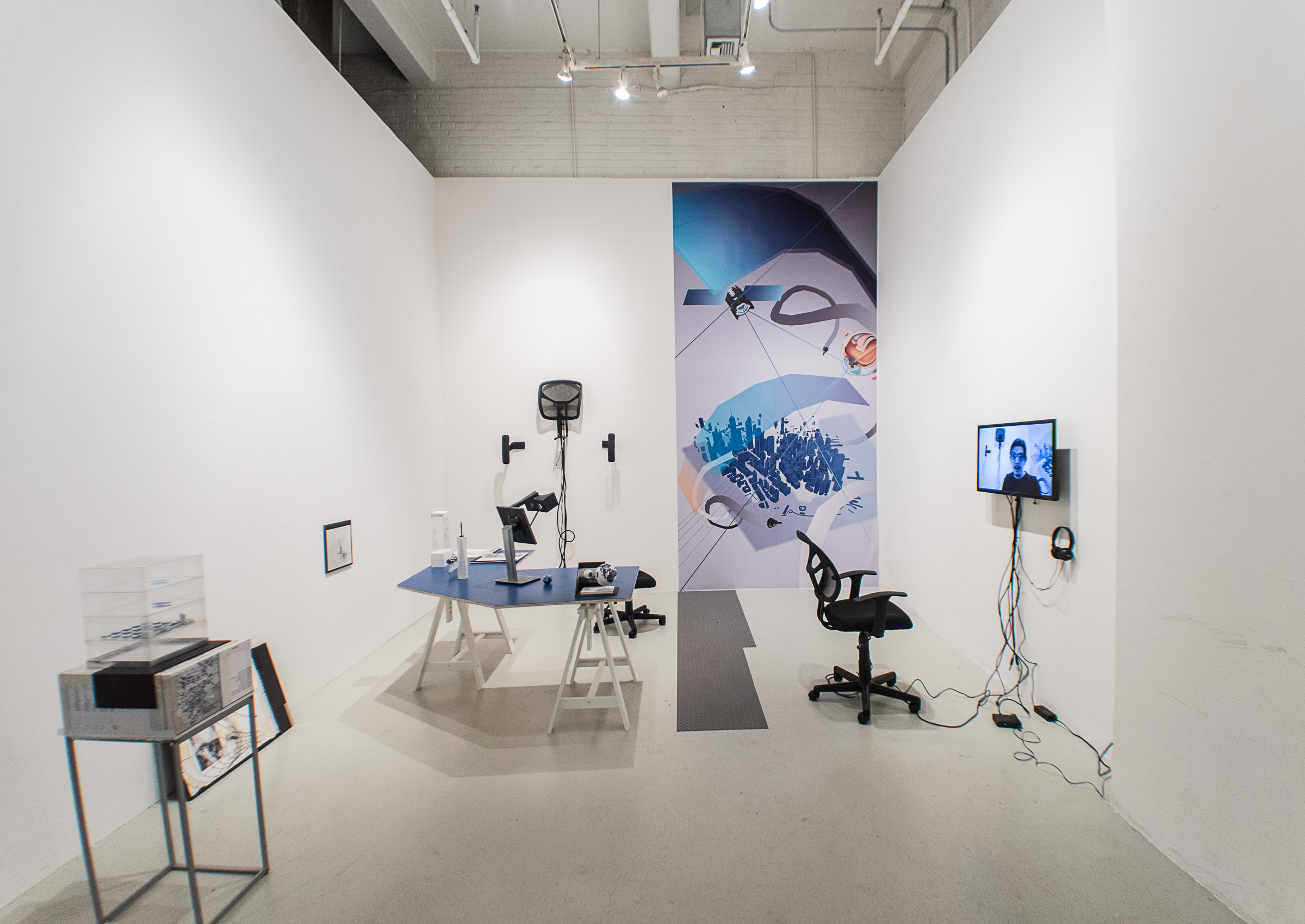
Presented as part of the Workspace 2016 series, featuring the work of LES Studio Program artists-in-residence
If there is value in Pokemon Go, it lies not in its users’ enjoyment of the game, but in the scope of the geographical data collected as consequence of its attention capture. It is the same reason why Uber is valued at over sixty-billion by Wall Street — despite the fact that the company outsources its workforce and owns minimal material assets — it extracts data that rivals Google Maps. These apps present a clear example of how the specificity of a space is increasingly interpenetrated by systems of organization that exist beyond the bounds of any locality. The cloud melts all that is solid into Airbnb.
Technology has always influenced the design of our cities. In 1941, the New York City planner Robert Moses proposed the Lower Manhattan Expressway (LOMEX), a massive public redevelopment based on the prevalence of the automobile. LOMEX would cut across lower Manhattan connecting the Manhattan and Williamsburg bridges to the Holland tunnel. As support waned for the project in the late 1960’s, the modernist architect Paul Rudolph attempted to revitalize it. He proposed a series of megastructures, organized around the artery of LOMEX. The design operated as a total architecture, encompassing ziggurat-like living quarters, parking, underground districts, gardens and parks.
Today projects such as Rudolph’s are not only being considered, but actually built (for example: the Hudson Yards project). On a much larger scale, Lower Manhattan is now considering a project dubbed “The Dryline”, after the well-received “Highline”. Conceived by one of the principal architects of Hudson Yards, Bjarke Ingels Group (BIG), “The Dryline” promises parks, bike paths, and newly developed infrastructure wrapping around the whole of Lower Manhattan. The foremost aim of the project, however, is to act as a flood barrier, protecting valuable real-estate, infrastructure, and property in Lower Manhattan from the increasingly severe effects of Anthropogenic climate change.
Under those same waters that threaten to engulf the city lie a series of fiber-optic cables, linking the city’s communication and market hubs to a global communication infrastructure. Just as it has been suggested that we alter the coastline to protect the heart of New York’s trade district, other (less-conspicuous terraforming) projects have bored through mountains to shave milliseconds off the networks through which high-frequency trading operates. This rapacious need for speed culminates in the speculative plot to tunnel through the center of the earth, connecting New York and China, and saving even a few more thousandths of a second for the slight advantage in arbitage.
Joshua Johnson is a New York based artist and writer. He works across a diverse range of media including sculpture, video, online-media, installation, and research based practices. His art has been shown at Outlet Gallery, Parallel Arts Space, Louis B. James (all NY), amongst others. He has contributed writing to The Third Rail and has presented papers at Parsons School for Design and the Montreal Biennale (2014). In 2015, he founded the ongoing research and resource hub Uberty. In 2013, he organized and edited Dark Trajectories: Politics of the Outside ([NAME] Publications), a compilation of recent philosophy. He is engaged in several collaborative projects, including Office for Applied Complexity, and was a 2016 Artists Alliance resident artist. His website may be found at joshuaj.net.
Not knowing Alberti’s stated four responsibilities of an architect (assuring good air, water, circulatory space and defense for a city), Peter Fend entered the art world in 1976 to do that work. Along the way, his efforts, either corporate or solo, have been shown twice in Documenta and Venice-Biennial Apertos, in the Sharjah Biennialand, recently, the Beijing Media Art Biennial. Though mainly showing in the international art world, he aims chiefly to improve reality. He works corporately, through vehicles like Ocean Earth Development Corporation (OEDC) and Television Government (TVGOV). Thus teamed, he has assessed sites with authority (satellite monitoring for mass media and governmental eco-tax), designed and tested structures for zero-emissions energy, efficient hydropower, and restored water cycles, and–in more personal collaborations–designed body-responsive architectural components meant to end unhealthful uses of space, including homelessness. His work has had more impact in global news sites and venues like the UN, scientific conferences and US Congress than in the art world. All work is based on paradigms from Duchamp, Beuys, Earth Artists, Schneemann, Edelson, Horn, Lewitt, and two pioneers with whom he joint-ventured, Gordon Matta-Clark and Paul Sharits. Surprisingly, he has found that most obstacles to realizing or even showing projects come from “Free World” governments. Such obstacles also weaken Art.
Ross Exo Adams is an architect, urbanist and writer whose research looks at the historical and political intersection of circulation and urbanization. His work has been published and presented widely on inherent relations between architectural practice and geography, political and legal theory, ecology and philosophy. Ross holds a Ph.D. from the London Consortium (2014) for which he was awarded the 2011 LKE Ozolins Studentship by the Royal Institute of British Architects (RIBA). He has taught at the Bartlett School of Architecture, UCL, the Architectural Association, the Berlage Institute and is currently Assistant Professor of Architecture at Iowa State University.
Cuchifritos Gallery + Project Space is a program of Artists Alliance Inc., a 501c3 not for profit organization located on the Lower East Side of New York City within the Clemente Soto Vélez Cultural and Educational Center. Cuchifritos is supported in part by the New York City Department of Cultural Affairs in partnership with the City Council. This program is made possible by public funds from the New York State Council on the Arts with the support of Governor Andrew M. Cuomo and the New York State Legislature and the National Endowment for the Arts. We thank the following for their generous support: Marie and John Zimmermann Fund, Gilbert MacKay Foundation, New York City Economic Development Corporation and individual supporters of Artists Alliance Inc. Special thanks go to our team of dedicated volunteers, without whom this program would not be possible. For more information, visit artistsallianceinc.org.














